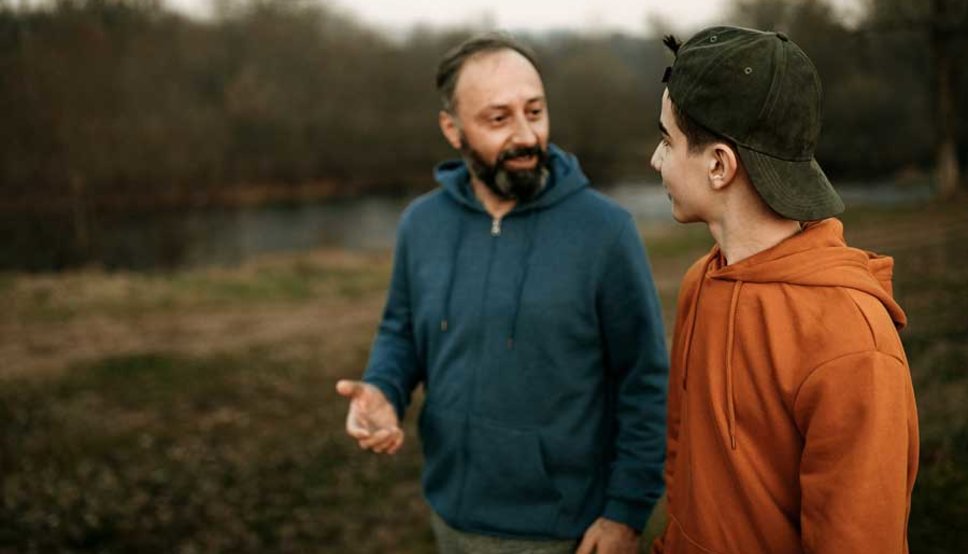How to Talk to Kids about Pornography

As a parent or guardian, talking to your teenager about sex and topics related to sex can be daunting. Technology has made it easier than ever for teenagers to access all kinds of content, both good and bad. This has created new challenges for parents to navigate, including speaking to their teens about sexting and about accessing inappropriate content, like pornography.
Do many teenagers watch pornography?
In the United States and many other countries, it is illegal to show pornography to someone under the age of 18. Because of this, most popular websites that aggregate pornography ask users to verify that they are at least 18 years of age before entering the sites—however, these pop-ups are easy to bypass.
Determining how many teenagers are accessing pornography is difficult, most teenagers do not discuss this with their parents and might feel awkward discussing it with a researcher who is a stranger to them. Some studies estimate that between 30-65% of teens have been exposed to pornography online; most of those viewers came across it accidentally, through a mistyped search, as opposed to intentionally seeking it out. Older teens are more likely to have been exposed to online porn, and boys are more likely than girls to report having viewed it.
Is watching porn bad for teens?
For children under the age of 12, exposure to porn can be distressing and harmful. For teenagers, sexual curiosity and exploration are natural and healthy parts of development. However, there are still potential problems that may come with viewing pornography online.
Some studies suggest adolescents’ porn use is associated with more sexual objectification of partners, more stereotypical beliefs about gender roles in sex, and more sexual aggression. Porn can create unrealistic ideas about sex, send confusing messages about consent, encourage degradation of women, racial minorities, and other groups, and depict unhealthy communication and unsafe sex practices. These risks are especially apparent for pornography that is violent or degrading, which can be easily accessed through mainstream pornography sites.
How do I talk to my child about watching inappropriate content?
For younger children and tweens (and maybe early teens), implementing parental controls on their devices can be an important first step to creating safe online experiences. However, even with these controls in place, it is critical to talk to children about sex and pornography (no matter how uncomfortable those conversations may be!)
Parent communication with teens can limit negative effects of teens’ porn-viewing, such as risks of engaging in unprotected sex. Ideally this discussion is just one of many open, honest, age-appropriate, and non-judgmental conversations about bodies and sex that parents are having with their children as they grow, but this will look different for every family.
You might find it helpful to have these difficult discussions when you’re alone with your child and doing some sort of simple activity, such as going for a walk or driving in a car. Knowing there’s a time limit can also help make the situation a little more comfortable. Here are some tips for making the conversation go smoothly.
Introduce the conversation gently
Introduce the conversation in a way that clarifies it has nothing to do with something your child has said or done. For example: “I’ve been meaning to talk to you about something now that you have your own phone.” Acknowledge that it can be an uncomfortable discussion, and that awkwardness is totally normal. Ask questions to gently open up the conversation and get a sense of what your child already knows—asking about “people their age” can help eliminate some awkwardness and make the questions feel less personal. Reassure your child that it’s normal to be curious about bodies and sexuality, and that you are always available as a resource.
Be open and honest
You’ll want to identify how your own values around pornography and sex before starting this conversation. You might explicitly say “I don’t want you watching porn,” or choose a less definitive stance. Again, each family is different. No matter what your views, you’ll want to communicate that porn is not a good way to learn about sex and it is not intended to be educational. It is not realistic. Share concerns about the types of porn typically available on free websites and how it typically does not depict healthy communication or safe sexual practices. Ask your child if they have questions.
Share resources with your child
Provide resources for your child to learn about sex, and remind them that you’re always a resource, too. Here are some helpful resources for you to get started:
- 15 Best Sex Education Books and Resources for Kids
- Tips to Talk to Your Kids About Porn in a Sex-Positive Way
- Sex Positive Families
- Parents’ Ultimate Guide to Parental Controls
It’s very common for this type of conversation to feel embarrassing (both for you and your child!). Reassure them that it’s okay and normal to feel uncomfortable, and that you’re always there and open to discussing this and other difficult topics when they are ready.
For more tips on keeping kids healthy and happy, visit the Grow section of our Be Well health and wellness blog.
About the Author:
Jacqueline Nesi, PhD, and Margaret Nail
Dr. Jacqueline Nesi, is a clinical psychologist with the Bradley Hasbro Children's Research Center. Her research examines the role of social media in adolescents’ peer relationships and mental health, with a focus on depression and suicidal thoughts and behavior.
Margaret Nail is a clinical research assistant with Dr. Nesi through Brown University and Rhode Island Hospital.
Be Well Newsletter
Find a Doctor

The right provider is in our network
Search more than 1,200 providers in our network.



